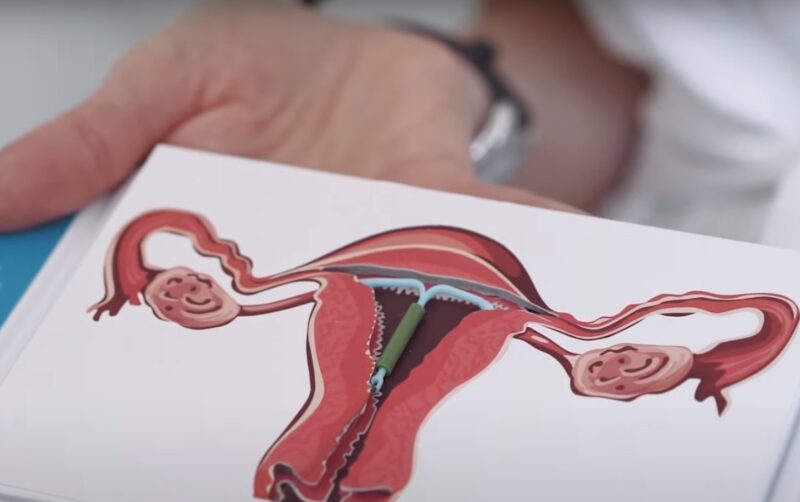Many women feel tetchy and irritable before their periods, but for some, progesterone sensitivity can make it far worse.
Progesterone sensitivity wasn’t something I had heard of until late last year, even though it seems I’ve had just about all my menstruating life.
And it was during a phone call with menopause expert Peter Greenhouse in February that I discovered I’d suffered from premenstrual dysphoric disorder (PMDD).
Until then, I’d always said I’d had “really bad” premenstrual tension (PMT). I’m not alone – up to 8 per cent of women suffer from such extreme symptoms that they can feel depressed and anxious and even suicidal.
PMT on Overdrive

About two weeks prior to my menstrual cycle, I experienced a profound sense of gloom and a spike in anxiety and depression. My mood swings were severe, oscillating between irritation and anger towards others, followed by intense guilt that often led me to cry in the solitude of the bath or shower.
Sleep evaded me, and my motivation to engage in activities or socialize vanished. My breasts were tender, and my clothing felt snug due to bloating or incessant eating; satiety seemed elusive.
The discomfort wasn’t just emotional; it was physical too. My coordination suffered, leading to frequent accidents like dropping and breaking objects, or injuring myself against furniture and car doors.
The bleakness seemed endless until, just as my period was about to begin, everything would suddenly brighten up, as if a switch had been flipped.
Along Comes the Menopause
Then, perimenopause struck. My menstrual cycle became erratic, yet I felt remarkably well. For extended periods, my mood and physical state stabilized. I shed over twenty pounds and even prepared for my inaugural half-marathon.
“I never knew life could feel this good,” I shared with a circle of friends. “It’s like being 11 again.”
However, the good times were short-lived. As my estrogen levels fluctuated wildly and my progesterone struggled to keep up, my well-being deteriorated, mimicking an endless bout of premenstrual tension.
You might think, “Ah, she turned to HRT, and that fixed everything.”
But HRT, necessary for those with a uterus, involves a dual regimen: estrogen and progesterone, alternating every two weeks. For someone sensitive to progesterone, this regimen risked reverting to the familiar, challenging cycle.
A few months in, a pattern emerged. The weeks on estrogen were fantastic; once I switched to progesterone, my previous symptoms resurfaced.
And intensified.
Despite changing patches, the gloom persisted, growing denser with time.
The Darkest Hour

I’d love to report that was the peak of my struggles, but unfortunately, it’s been far from it. Going most of this year without HRT has been torturous. Initially, I thought I could handle it, but within weeks, I spiraled downward – experiencing mood swings, anger, overwhelming guilt, self-loathing, a sense of global responsibility, and incessant tears.
The Monday following Pausitivity’s presentation to parliament marked my lowest point.
Dark thoughts, more intense than any I faced during my years battling OCD, overwhelmed me, convincing me of my worthlessness until I reached a despairing conclusion: “I can’t bear feeling like this. I don’t want to be myself anymore. I don’t want to exist.”
If not for the intervention of three incredible women, I doubt I’d still be here. Their support means more to me than they can imagine.
Peter’s prescription of an estrogen gel, which I had been using for five days by then, became my lifeline. Clinging to hope, I applied it after my routine cry in the shower, patiently waiting for a change.
Gradually, over a few weeks, a shift occurred. I awoke one morning feeling lighter, took the time to do my hair and makeup, dressed up, and embraced the day. Since then, I’ve maintained this routine, and although I’m not euphoric, every day that feels even remotely okay is cherished as a victory.
We Need to Change This
This ordeal has served as yet another stark reminder of the neglect surrounding women’s health and the ongoing struggle to secure the necessary research. PMDD remains widely misunderstood, and even PMT is met with skepticism – I recall a friend sharing that she was told she couldn’t possibly suffer from PMS, as it was known then, because her husband “didn’t believe in it.”
To be frank, these past few months have pushed me to the brink, with my hormones and emotions causing chaos. Yet, the moment I learned that my experiences were not a sign of losing my sanity but were instead recognizable, comprehensible, and manageable, brought me immense relief. It’s this understanding that has prevented me from surrendering to despair.
What Is Progesterone Sensitivity?
Progesterone is a sex hormone mainly produced in the ovary to get your womb ready for pregnancy. It is released in higher levels after you ovulate (about day 14) in the expectation that the egg may be fertilised. If that doesn’t happen, levels start to drop again, you have your period and a new cycle begins. It is also made in smaller amounts in other parts of your body.
PMDD is not a hormone imbalance; rather it’s how your brain reacts to the hormone. Scientists believe that in some women, progesterone can affect the part of the brain that controls emotions, behaviour and general sense of well-being. Researchers in Melbourne think it is the receptors in the brain that help us deal with anxiety and stress that are affected by changing levels of progesterone.
What Are the Symptoms of Progesterone Sensitivity?

There are a lot and if you’re going through a bad menopause, you may recognise some of them.
- Crying, feeling sad, hopeless or suicidal
- Anxiety and stress
- Panic attacks
- Mood swings
- Irritiable or angry with other people
- Lack of motivation or interest in life or relationships
- Difficulty conentrating or thinking
- Tiredness and fatigue
- Cravings
- Eating too much
- Insomnia
- Feeling out of control
- Bloating
- Sore breasts
- Headaches
- Muscular and joint pain
How does this make you feel? I know looking back, I can pinpoint the angry message on social media or the stinging email to those weeks when I was on the progesterone part of my HRT. It felt as if a devil had got inside me and was controlling my actions, that I wasn’t in control and was compelled to do this. Honestly? It’s a frightening way to be.
How Can You Control Progesterone Sensitivity?

In HRT, progesterone is essential for those with a uterus to mitigate the risk of endometrial cancer. Oestrogen thickens the womb’s lining, while progesterone facilitates its shedding through a monthly bleed, akin to a simulated period. Consequently, women who have undergone a hysterectomy can safely use oestrogen alone.
For individuals sensitive to progesterone, the challenge arises because HRT in pill or patch form distributes the hormone throughout the body. This can be particularly problematic for those with PMDD, as experiencing a surge of progesterone not just in the womb but throughout the body can exacerbate symptoms.
A common solution offered by many GPs is the Mirena coil, which delivers progesterone directly to the womb, minimizing its systemic effects. Progesterone pessaries, inserted vaginally, represent another option, though their use for this purpose is not officially sanctioned by the NHS.
I’ve opted for the coil, but the pandemic has led to the cancellation of my initial fitting appointment. It’s possible to use oestrogen gel without progesterone for up to six months, though the general advice from GPs is to limit this to 12 weeks. This is yet another reason I’m eager for the Covid-19 crisis to end, as the prospect of discontinuing the oestrogen is daunting.
Helplines and Further Contacts
If you’re on Twitter, I follow Vicious Cycle: Making PMDD, PMDD and Me CIC and Describing PMDD for loads of information and help.
There’s also the International Association for Premenstrual Disorders and the National Association for Premenstrual Syndrome.
FAQ
What is Progesterone Sensitivity?
Progesterone sensitivity refers to a condition where the body reacts negatively to the hormone progesterone, leading to severe symptoms such as mood swings, depression, and physical discomfort. It is not a hormone imbalance but rather how the brain reacts to progesterone.
What is PMDD?
Premenstrual Dysphoric Disorder (PMDD) is a severe form of premenstrual syndrome (PMS) characterized by significant emotional and physical symptoms that disrupt daily life. Symptoms include severe mood swings, depression, irritability, and physical symptoms like bloating and fatigue.
How common is PMDD?
Up to 8% of women suffer from PMDD, experiencing symptoms so severe that they can feel depressed, anxious, and even suicidal.
What are the symptoms of Progesterone Sensitivity?
Symptoms include crying, feeling sad or hopeless, anxiety, stress, panic attacks, mood swings, irritability, lack of motivation, difficulty concentrating, tiredness, cravings, insomnia, bloating, sore breasts, headaches, and muscular pain.
How can you control Progesterone Sensitivity?
Managing progesterone sensitivity involves minimizing its systemic effects. Options include the Mirena coil, which delivers progesterone directly to the womb, and progesterone pessaries. For those undergoing HRT, balancing estrogen and progesterone intake is crucial.
Can you use estrogen without progesterone in HRT?
Women who have undergone a hysterectomy can use estrogen alone. However, for those with a uterus, progesterone is necessary to mitigate the risk of endometrial cancer. In some cases, estrogen gel can be used without progesterone for a limited time under medical supervision.
Conclusion
Understanding progesterone sensitivity and PMDD is crucial for those affected and the broader community.
These conditions highlight the complexities of women’s health, underscoring the need for greater awareness, research, and support.
By recognizing the symptoms and exploring management options, individuals can find relief and improve their quality of life.
It’s essential to continue the conversation around these issues, advocating for better healthcare solutions and support systems for women navigating these challenges.
